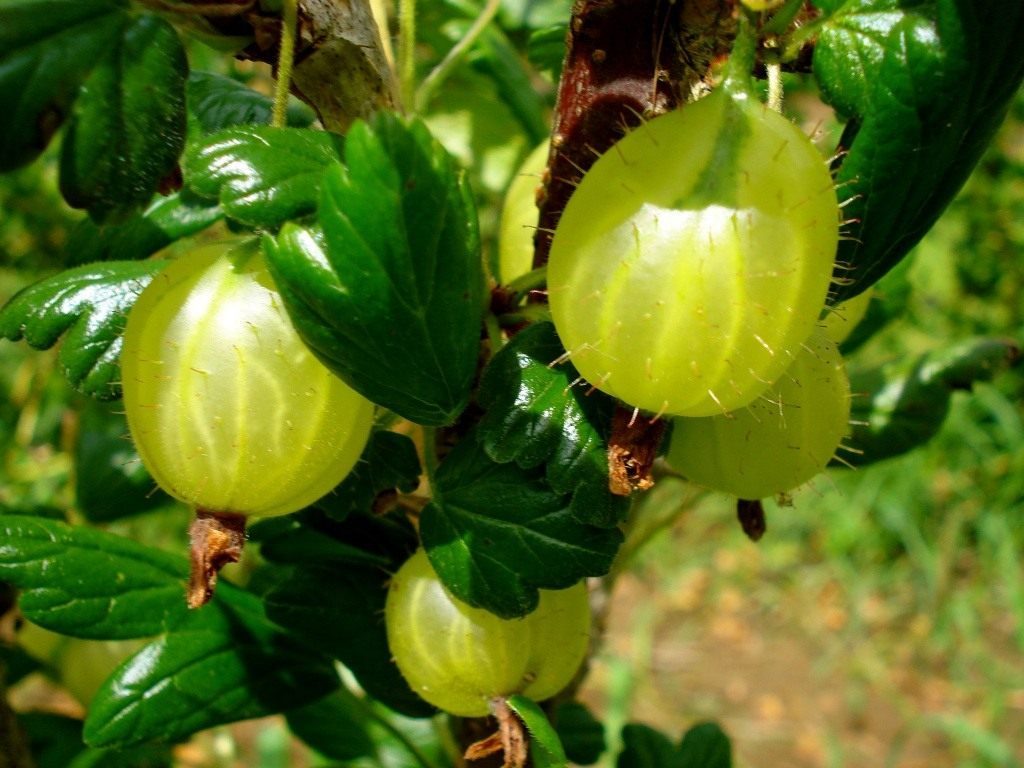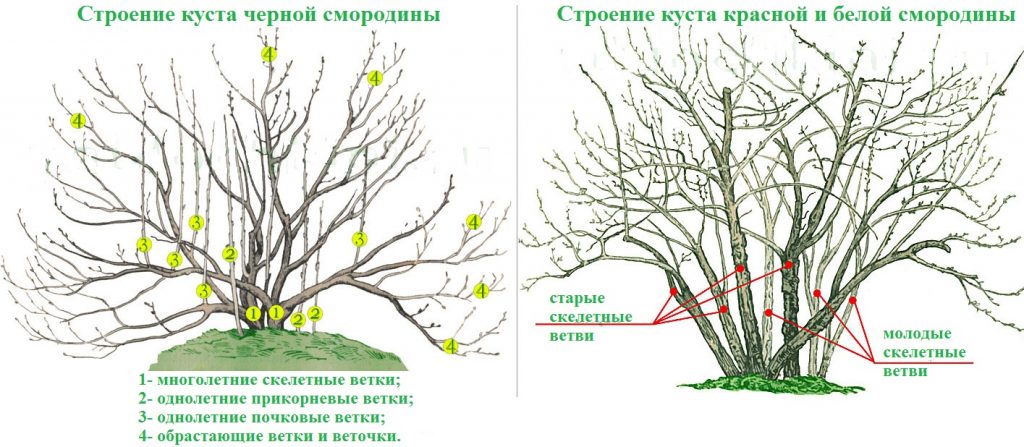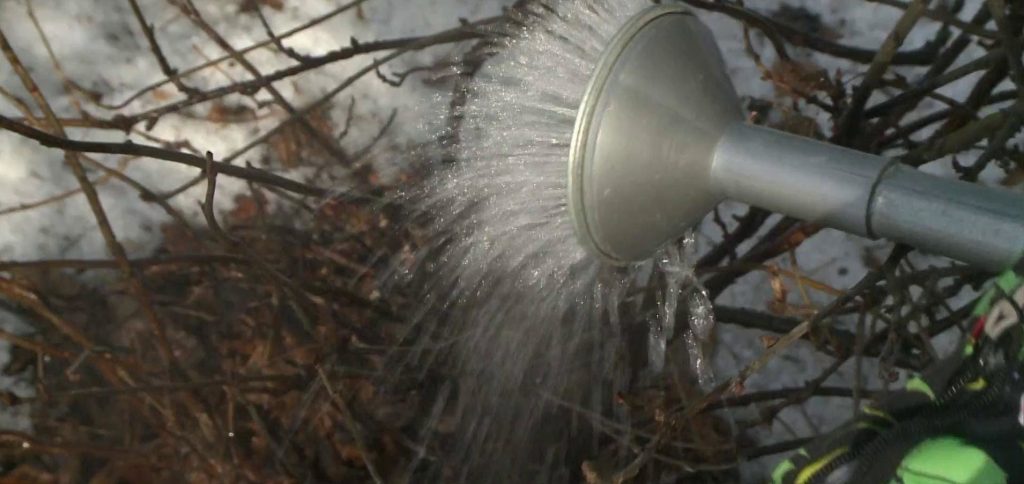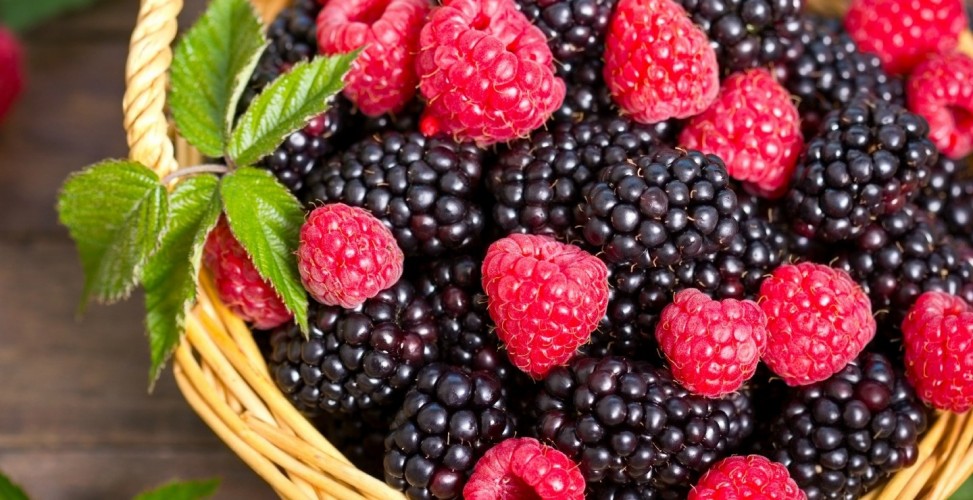Content:
Like all berries, gooseberries and currants need careful care in early spring. Caring for shrubs during this period is necessary in order to ensure their awakening and active growth, protection from pests and diseases, abundant laying of flower buds, early and abundant collection of berries.
To take care of the bushes of these crops, whether it is a personal plot in the city or a summer cottage outside it, should be started even before the snow completely melts, with the onset of stable daytime positive temperatures.
Caring for currants and gooseberries in spring consists of such activities as clearing the bushes from snow, pruning, feeding, watering, loosening and mulching the soil, and fighting pests and diseases. Also at this time, transplantation of cuttings rooted in a year, uprooting of old bushes is carried out.
Snow release
If the winter is snowy and long, then the first spring care for currants and gooseberries will be to free them from snow. To do this, the snow cover around the bushes is carefully removed by hand or using a plastic spatula. Also cleared of snow and aisles. Iron bayonet shovels cannot be used for this operation - they can damage the bark of the bush, which, when the sap flow begins, will lead to the plant drying out.
The snow removed from the plantation is thrown away from the bushes so that melt water does not flood the soil when a steady warming occurs, thereby holding back follow-up and oppressing the plant root system.
Removing old foliage and loosening the soil
After the soil has thawed and dried out enough, last year's foliage and garbage accumulated over the winter are removed under the bushes. After that, all the spaces around the bushes are loosened with a flat cutter or a rake to a depth of 3-4 cm.
Pruning
Pruning of currant bushes is performed at an air temperature of no more than 80 C, before the start of sap flow and the awakening of the kidneys.
The pruning scheme depends on the age of the bush:
- The bush planted last year is cut off, shortening the shoots in the middle, leaving 2-3 well-developed buds on each of them;
- In plants of 2 years of age, the shoots of the 2nd order are shortened, leaving at least 6-8 healthy buds on each of them;
- In bushes of 3 years of age, all perennial shoots are shortened by 1/3 of their length; last year's one-year-old growth is not cut off;
- On fruiting bushes, starting from the 4th year, old shoots are gradually removed, the tops of young branches are cut off.
When pruning bushes of any age, the following shoots must be removed:
- Weakened and damaged by frost, rodents;
- Broken by wind or snow;
- Infected with kidney mites;
- Located at an angle of less than 450 to the soil surface;
- Thickening the center of the bush.
All such shoots are removed with pruning shears at soil level.
A properly formed bush when pruning should consist of 5-10 strong, upright or slightly inclined shoots.
Gooseberry bushes are cut in the spring according to the following scheme:
- Remove all thickening bush, affected by frost, broken one-year-old (zero) shoots, leaving 3-5 of them the strongest and most developed;
- Only the tops are removed from the left zero shoots;
- On bushes 4-7 years old, old and unproductive shoots are removed.
Top dressing
Bushes of these crops, more than 3 years old, need feeding.
On fertile and cultivated soils, gooseberries and currants are fed 2 times in the spring. The first feeding is carried out before bud break, in late April-early May.
For this, nitrogen fertilizers are used in the following doses:
- Ammonium nitrate - 65 g / bush;
- Urea (carbamide) - 60 g / bush;
- Ammonium sulfate - 90 g / bush.
Fertilizers are applied immediately after the snow melts and the topsoil dries up, scattering them evenly around the shoots of the bush.
The second feeding is carried out in the middle and beginning of the 3rd decade of May. For her, use an infusion of mullein, diluted in a 1: 5 ratio. The dose of such a nutrient solution for 1 shrub during watering is 10-12 liters.
Watering
With dry springs and winters with little snow, the bushes in the early stages of growth and development are in dire need of moisture. To do this, they must be watered during the spring. Watering in such cases is carried out at least 2 times a week. In order to reduce evaporation, water the plants in the morning or late at night. An average of 10 liters of water is consumed per bush at a time.
Mulching
In order to reduce the drying out of the soil, create unfavorable conditions for the growth and development of weeds, planting gooseberries and currants in early spring is mulched.
The essence of this measure is to cover the soil around the bushes with a layer of humus, low-lying peat. The thickness of the mulch layer should be at least 4-5 cm. As the watering and loosening process, the mulch layer is renewed.
Disease and pest control
Spring is a time when many pests appear, plants are infected with diseases. Therefore, it is very important to correctly, and most importantly, timely warn and, if necessary, deal with them.
Growing nearby, currants and gooseberries are affected by pests such as:
- Kidney mite;
- Spider mite;
- Aphid;
- Fire Flame;
- Moth;
- Glass-maker.
To combat them in early spring, before the buds awaken, the bush is watered with boiling water, last year's foliage is removed, and the soil is loosened. When pests appear, the bushes are treated with insecticides such as Kinimiks, Aktelik, Karate-Zeon, Bi-58, Fufanon. Ammonium diluted in water is effective against aphids.
Of the diseases, the following are the most dangerous for these crops:
- Powdery mildew;
- Rust;
- Septoria;
- Gray rot;
- Mosaic.
As well as against pests, the fight against diseases consists in the timely harvesting of last year's foliage, often affected by diseases, the destruction of weeds, which are disease reserves, timely pruning and feeding.These measures help to strengthen the plant and make it less susceptible to disease. When foci of disease are detected, the affected bushes are sprayed with fungicides such as Topsin-M, Topaz, Fundazol. If the bushes are infected with a viral mosaic, they are immediately uprooted and burned to prevent the spread of an incurable and harmful disease to nearby plants.
Transplant of layers
In addition to caring for fruiting bushes in the spring, cuttings that have taken root during the year are also transplanted.
Rooted layers are transplanted as follows:
- The soil, with which the layering is pressed to the ground, is carefully raked with hands or a small hoe, a rake;
- With a bayonet shovel or a garden knife, the layers are cut off from the mother bush;
- A young bush obtained in this way is transplanted to the place prepared for it immediately or it is grown for some time in a school, postponing planting until the fall.
Spring care for currants and gooseberries is a good start for the summer, during which a well-groomed and strong plantation will yield tasty and large berries.
















